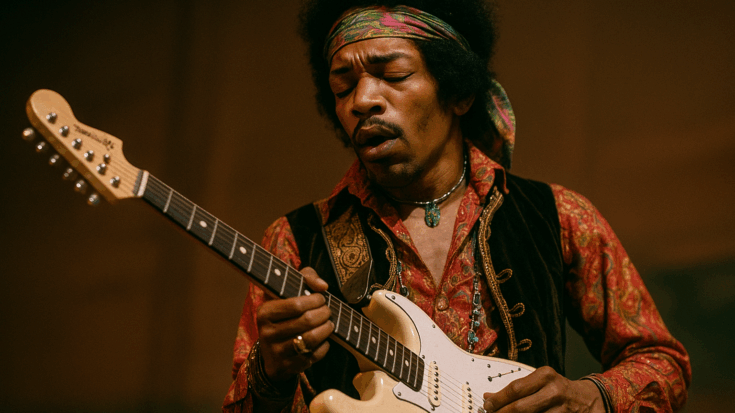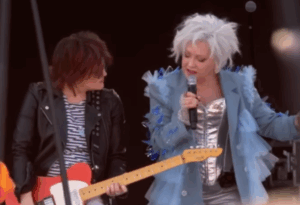Who Inherited Jimi Hendrix’s Estate? His Father Got It, Then His Sister Took Charge

via Society of Rock
Jimi Hendrix’s impact on music remains enormous despite a career that lasted only a handful of years. His groundbreaking guitar work, fearless experimentation, and magnetic stage presence reshaped rock music at a pace few artists have ever matched. Even today, his performances influence new generations of musicians who study his tone, phrasing, and approach to improvisation.
His death in September 1970 left the world stunned. Hendrix spent the evening with his girlfriend, Monika Dannemann, moving between her Notting Hill apartment and a small gathering with friends. Reports say he took an amphetamine tablet that night, and by the time the couple returned home in the early hours of the morning, he was struggling to rest. When Dannemann found him unresponsive the next morning, emergency services could not revive him.
With no will in place, Hendrix’s estate entered decades of legal and financial disputes. What began as a simple inheritance quickly became a long-running battle involving royalties, image rights, and family conflict. Today, the estate remains one of the most valuable in rock history and a major part of Hendrix’s lasting presence in popular culture.
The Circumstances Surrounding Hendrix’s Death
Hours before his death, Hendrix and Dannemann were moving through what seemed like an ordinary night for the couple. They had dinner, visited friends, and returned home well after midnight. But the amphetamine Hendrix reportedly took complicated everything, leaving him restless and unable to sleep. By the time the sun came up, Dannemann recalled that he was finally resting while she stepped out briefly for cigarettes.
When she returned and couldn’t wake him, the situation escalated quickly. Paramedics arrived to find Hendrix already gone, the official cause of death listed as asphyxiation from inhaling his own vomit. There was no indication of foul play, no dramatic final note, and no preparation for the business matters that would follow.
Hendrix’s passing at just 27 years old added him to what later became known as the “27 Club,” a grim grouping of artists who died young and unexpectedly. But unlike many of his peers, the legal and financial questions he left behind would shape his legacy for the next half century.
Al Hendrix Takes Control of the Estate
Because Jimi Hendrix died without a will, his father, Al Hendrix, became the legal heir. The transition was straightforward on paper, but managing a rapidly growing, globally valuable musical legacy was anything but simple. Al worked closely with attorney Leo Branton, who helped organize finances and ensure royalty income continued flowing.
In the years after Jimi’s death, Al faced several challenges. One of the biggest was the decision to sell Hendrix’s distribution rights, a financial move that seemed reasonable at the time. But the value of Hendrix’s recordings soared throughout the 1970s, and legal battles eventually emerged as Al fought to reclaim those rights.
Al ultimately regained control, allowing the family to oversee Hendrix’s music once again. This period laid the foundation for the structured, business-focused estate that would come later, turning Hendrix’s legacy into a professionally managed brand rather than a scattered collection of licensing deals.
The Shift to Janie Hendrix, and the Family Dispute
When Al Hendrix died in 2002, his will named his adopted stepdaughter, Janie Hendrix, as the primary beneficiary of the estate. The decision surprised many, especially Jimi’s biological brother, Leon Hendrix. Leon claimed he had been cut out because of Janie’s influence, arguing that he deserved a share of the inheritance.
The court ultimately rejected Leon’s claims in 2007. Despite multiple attempts to challenge the arrangements, none succeeded. Over the years, the disagreements extended into disputes over trademarks, merchandise, and the use of Jimi’s image—issues that remain sensitive within parts of the Hendrix family.
Janie continued moving the estate toward a centralized, tightly controlled operation. Her leadership emphasized preserving Hendrix’s brand, protecting trademarks aggressively, and building a consistent narrative around his life and music.
The Modern Hendrix Estate
Today, Jimi Hendrix’s estate is a major commercial powerhouse. By 2021, its estimated value reached around $175 million, supported by royalties, licensing, merchandise, archival projects, and ongoing releases of remastered or previously unheard recordings. Few artists who died so young have a posthumous career as active or profitable.
The estate operates mainly through two companies: Experience Hendrix and Authentic Hendrix. Both were originally established by Al Hendrix, but under Janie’s leadership, they became the core of the Hendrix business empire. They oversee everything from album reissues to apparel, documentary projects, and official branding partnerships.
While the legal battles and family disagreements cast a shadow over parts of the history, the estate’s structure ensures that Hendrix’s music stays active and accessible. Half a century after his death, his creative output still resonates loudly, proving how powerful a legacy can become when the music never stops inspiring listeners.











